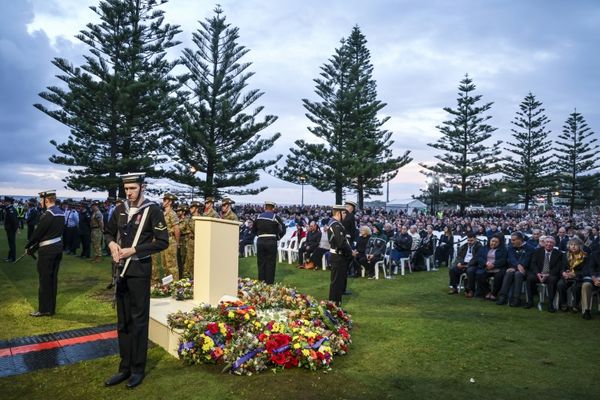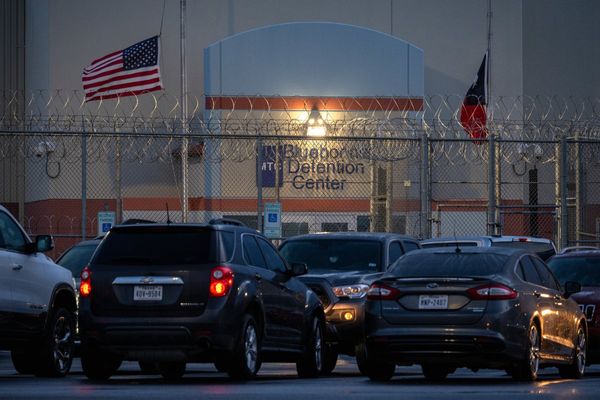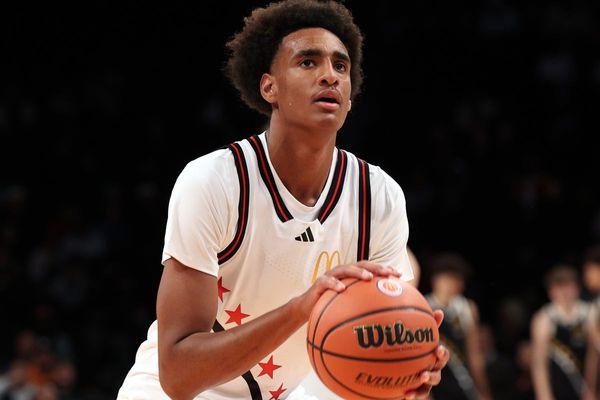
There’s a lot of talk about one-percenters in football, those tiny extra tasks which, if performed consistently over a period of time, lead to improved outcomes. Sipping coffee may not exactly classify as work, but it is definitely yielding results inside the Socceroos camp.
In a sign of Australians’ sky-rocketing reliance on a good-quality brew, Football Australia staff have flown a barista to Doha especially to serve the hard stuff to players throughout the World Cup.
The young Sydneysider they recruited, Alexia Ralevski, spends her days in the team cafe, which has become easily the most popular room in the vast Aspire Academy they call home for at least the next couple of weeks. “They knew that I loved making coffee and I was kind of good at it,” says Ralevski, whose father runs a cafe chain. “So they thought they’d throw this off at me.”
Along with Ralevski, FA has imported a cafe-level machine and enough beans to last until the Socceroos exit the tournament. It is a significant step up from the fuel station-esque machine with buttons.
The blueprint was drawn up at last year’s Olympics, for which the Australian Olympic Committee organised a coffee cart in the athletes’ village as part of a holistic approach to preparation for a hugely successful Tokyo 2020 Games.
And in much the same way the nation’s athletes in Japan could not get enough of Melbourne barista Elliot Johnson, Ralevski is fast becoming the most popular member of Graham Arnold’s squad. She makes up to 80 coffees a day for players and staff, single-handedly maintaining a sense of equilibrium one can only attribute to the elixir of life.

Because there’s high performance, and then there’s caffeine-enhanced high performance. If we are going to get technical about it, many studies (not all) have found caffeine to be ergogenic, a legal performance-enhancer utilised by many an athlete the world over.
Mo Farah, Britain’s four-time Olympic gold medal-winning runner, drank coffee before he raced. “As I walk onto the stadium track,” he writes in his autobiography, “I feel this massive caffeine high.”
Even us lay people crave that welcome slap across the face to start the day. For footballers, it probably looks less like dragging yourself to the office and more like increased muscular endurance and mental alertness during training or matches.
The optimum amount, apparently, is 3-6mg per kilogram of body mass, which is almost certainly less than that consumed by Mitchell Duke, according to well-informed sources who say the striker enjoys up to six coffees a day – even in the evening.
That may be the most, but the most elaborate? “I won’t name names, but I’ll give you a state,” says defender Kye Rowles. “Victorians.” What he means is Jamie Maclaren, the Melbourne-based striker who orders what is known as a ‘magic’.
“It’s essentially a double ristretto, three-quarter-full latte,” Ralevski says. “If you’re from Melbourne, you’d know. Everyone’s hooked on them now. It’s the most popular drink so far.”
Riley McGree is “keen to give it a try”. Others, though, prefer to stick to the tried and tested. “I’m pretty straightforward,” says Mat Leckie. “I just go for a latte, nothing special.”
This is a World Cup like no other. For the last 12 years the Guardian has been reporting on the issues surrounding Qatar 2022, from corruption and human rights abuses to the treatment of migrant workers and discriminatory laws. The best of our journalism is gathered on our dedicated Qatar: Beyond the Football home page for those who want to go deeper into the issues beyond the pitch.
Guardian reporting goes far beyond what happens on the pitch. Support our investigative journalism today.
Fran Karacic likes an espresso, and the right-back is not alone. “Especially before training,” Ralevski confirms. “They go for the single or even double sometimes.”
Defender Bailey Wright, meanwhile, “is an oat flat white guy”. “But we’re trying different oat milks now,” he adds, “because we can’t quite master which oat milk is the one.
“People connect over coffee and food, and I think it’s a real social spot. It sounds crazy. We’ve got coffee and a little cafe, and it sounds like we’re spoiled. But we are spoiled, I’m not going to lie.”
Andrew Redmayne, a trained barista, bought his own to Qatar and has spent time behind the counter with Ralevski making filtered coffee. The others hop behind regularly to help her wash up.
If Ralevski looks after the liquid fuel then Vini Capovilla is in charge of the solids. As the long-time chef of Australia’s various national teams, Capovilla has travelled with the team everywhere they go since 2014, most often to Asian and Middle Eastern countries within the Asian Football Confederation.

Capovilla, who was born to Italian parents in Brazil, feeds breakfast, lunch and dinner to more than 60 people a day while catering to the specific dietary needs of 26 athletes with varying nutritional needs, allergies and intolerances.
“I always have a discussion with the medical team and the sports scientist so I know where each player is in their performance, and we try to adjust,” Capovilla says. “We try to cater the dishes that they are used to. This way we promote eating what we want them to eat.”
That is generally locally inspired dishes from locally sourced ingredients, to avoid biosecurity issues and keep things interesting and act as “a window to the cultural side of things”.
In Doha, Capovilla is overseeing chefs working for him from all over the world, including a head chef from Tunisia – one of Australia’s group-stage opponents – though “he’s already supporting us”.
Outside of the cafe and kitchen are hallways and rooms painted floor to ceiling in full-colour murals of the Socceroos’ famous qualifying playoff win over Peru and photos of previous squads. A pin-up board is covered in letters from Australian school children, and a giant banner lists every Socceroo in history.
There’s also a hangout area with a pool table and ping pong table, air hockey and Fifa. When the players are not there they are in their rooms – and there’s a pecking order. While senior players such as Aaron Mooy, Mat Ryan and Jackson Irvine get their own, others share two-bedroom apartments.
Some, however, like company, which has made for some bromance pairings including Harry Souttar and Riley McGree, Mat Leckie and Martin Boyle, and Jason Cummings and Garang Kuol.







